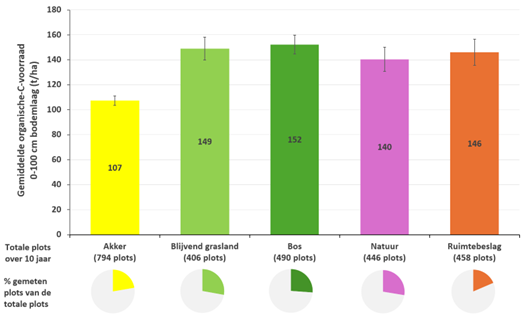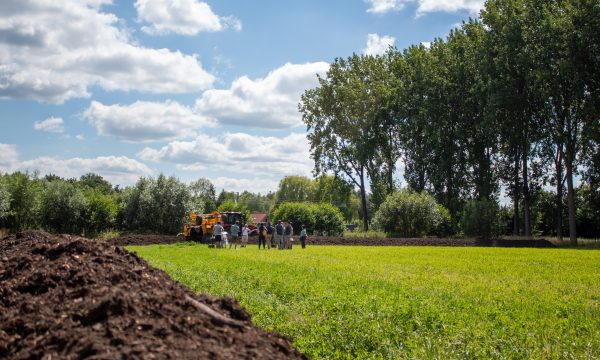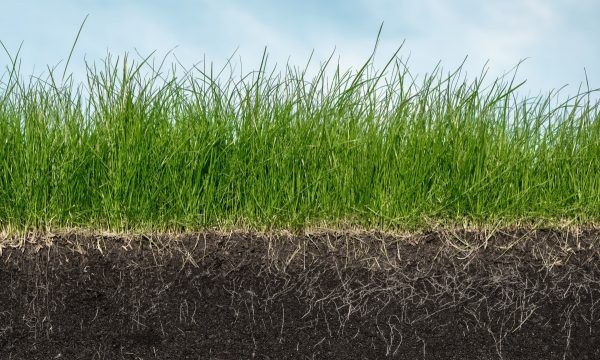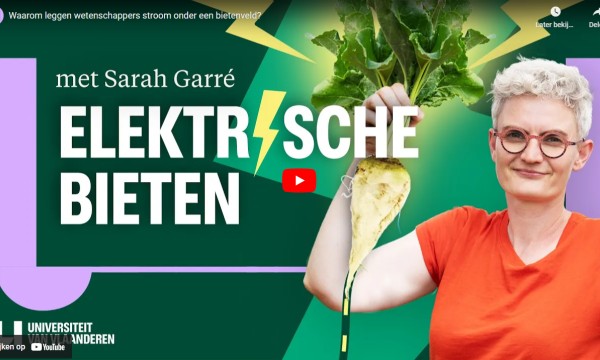Press release First carbon measurement Flemish soil. All land uses are useful for carbon sequestration
The Department of the Environment, together with INBO (Institute for Nature and Forest Research) and ILVO (Institute for Agricultural, Fisheries and Food Research), has been able to measure for the first time in 50 years the amount of carbon in the soil across all land uses. This surprisingly shows that there is no difference in the amount of carbon per hectare stored by grasslands, forests, nature and unpaved land occupied by humans. Only cropland stores less carbon per hectare. On the other hand, croplands do cover the most area, thus harboring the largest stock of carbon. So this means that all land uses are useful for storing carbon. Soil carbon stocks play an important role in global warming. With thoughtful land use and management, soil and trees can hold much more carbon and thus remove greenhouse gas from the atmosphere.
To make the soil more fertile, organic material is added. In natural systems, this is done, for example, by decomposing dead plant parts or animal material. In agricultural soils, additional organic material can be added through manure, compost or green cover crops. This stores carbon in the soil. After all, carbon is the main component of organic matter. On the other hand, carbon can also escape from the soil. This occurs in the form of CO2, a greenhouse gas that contributes to climate change. It is therefore important for both soil and climate policy to monitor soil organic carbon concentrations and stocks over long periods of time.
Down to 1 meter
The Department of the Environment, together with INBO and ILVO, launched CMon, the carbon monitoring network, in 2021. For the first time in 50 years, there are now measurements. Many studies and international carbon monitoring are limited to the top 30 cm of the soil, greatly underestimating total stocks. The Cmon results show that the 30-100 cm layer in Flanders contains a significant proportion (37 to 45%) of the organic carbon stock.
In the graph below, organic carbon stocks for the 0-100 cm soil layer are expressed in tons per hectare. On a hectare basis, there is no difference between organic carbon stocks in soils under forest, permanent grassland, nature and land use. Only croplands have statistically significantly lower organic carbon stocks per hectare in the soil layer compared to soils under another land use.

But because croplands occupy the largest area, the largest share of carbon (37 percent) is there. Soils under forest, grassland and unpaved land use each contain about 20 percent of the total carbon stock in Flanders, under nature there is 5 percent. The total organic carbon stock in Flemish soils to a depth of 1 meter is estimated at 137 megatons.
Important for international climate policy
The results that are now known represent only a quarter of all measurements. Over a period of 10 years, new measurements will be taken at 2594 measuring points, randomly distributed over Flanders so that the evolution can be tracked.
The Cmon results form an important basis for Flemish and European climate policy. Both to the IPCC (international climate panel) and at European level, Flanders must report on "Land Use, Land Use Change and Forestry (LULUCF)". The measurements show that we need to protect (and expand) important carbon storage pools such as forests, grasslands, wetlands. On the other hand, it also indicates that there is still margin for strong efforts within other land uses to increase carbon storage, such as cropland. With thoughtful land use and management, soil and trees can retain much more CO2 and thus remove greenhouse gas from the atmosphere.
Soil carbon monitoring network report Cmon annual report work year 3 (2023–2024): https://omgeving.vlaanderen.be/nl/vlaamse-koolstofmonitoring-hoeveel-koolstof-zit-er-in-de-bodem


